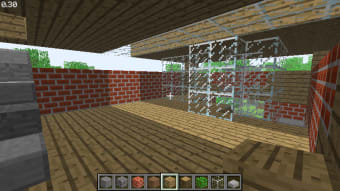Reliving the origins of a creative legacy
Minecraft Classic, developed by Mojang Specifications (now Mojang Studios), takes players back to where the global phenomenon began. Originally released in 2009, this browser-based version offers a nostalgic return to the roots of sandbox creativity. Accessible directly through a web browser, it allows anyone to build, explore, and share worlds freely—no downloads or installations required.
Simple, creative, and unrestricted
Minecraft Classic captures the essence of imagination with its minimalist 32x32x64 block world and a collection of 32 block types. Without survival mechanics, crafting systems, or objectives, the experience focuses entirely on creativity and exploration. Players can construct anything from basic shelters to elaborate structures, enjoying a pure, distraction-free environment.
While its simplicity is part of its charm, it also introduces limitations. There’s no save feature, meaning each session begins anew, and its retro visuals—though iconic—reflect the game’s early development stage. Multiplayer functionality allows up to nine players to join through a shared link, fostering easy collaboration, though performance may vary across browsers.
Nostalgia meets accessibility
Visually, Minecraft Classic preserves its signature pixelated style, featuring low-resolution textures and minimal sound effects that reinforce its retro appeal. It runs smoothly on most modern web browsers, thanks to minimal system requirements, and its intuitive keyboard controls make it easy to pick up and play. Despite lacking the complexity of modern Minecraft editions, its accessibility and simplicity create an enjoyable space for both veterans and newcomers to experience the franchise’s beginnings.
Final thoughts
Minecraft Classic stands as a nostalgic celebration of creativity and simplicity. Its web-based accessibility, cooperative multiplayer, and historical value make it a charming introduction to the Minecraft universe. Although it lacks saving features and advanced gameplay systems, it remains a delightful reminder of how one small sandbox evolved into a cultural phenomenon.











